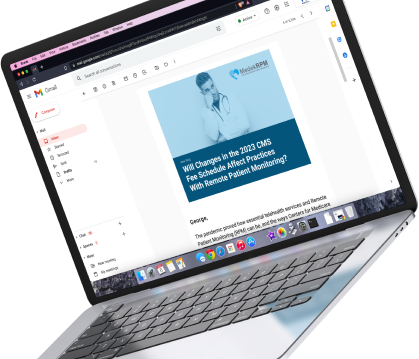
Whether you’re considering starting a Remote Patient Monitoring (RPM) program, one of the most challenging parts is having a conversation with your patients, informing them about the program, and having them join. Patients may have a few questions that you may need answers to, and this is where you (their healthcare provider) come in!
Informing patients can get them excited about starting an RPM program and reaching their health goals! Our team here at Medek RPM has written this blog post to help you overcome any challenges you may face to help patients become healthier.
Patient understanding
The first step in any conversation should be for you to understand the patient’s conditions and all external factors that might influence their health.
When patients go in for a consultation, you first should find out as much information about their health as possible. This includes their family history and other external factors like pollution or stress that may affect their health. You will then be able to provide personalized treatment options tailored to them with RPM.
Once you understand their health history, you should make a health goal plan for the patient. This will vary from patient to patient due to different conditions but might include a diet plan, exercise regimen, skincare routine, and education about the common triggers for their condition.
A clear, realistic, and attainable goal is essential so the patient will not get discouraged. When creating the plan and health goals, having frequent milestones will make the journey easier for the patient.
Communication
Once you have all the necessary information to assist the patient better, communication is the next step. The patient must understand that this is for their betterment.
Effective communication is the key to establishing an effective physician-patient relationship. When a doctor and patient communicate, there is a better chance that the patient will understand their treatment plan and be more receptive to the medical advice. We recommend treating the 5 Cs of communication as a checklist when communicating:
- Clarity
- Cohesive
- Complete
- Concise
- Concrete
Nonverbal communication is as important as your words to show and deliver the right message. Nonverbal behavior includes eye contact, facial expression, gestures, and posture. Your nonverbal behaviors can reveal more than you might realize, and verbal communication can seem incomplete without it.
Information
Patients need to be informed of their treatment options before making a decision. You are in charge of presenting the available options and answering any questions about those treatments.
All concerns are valid, even if they might not make sense to you. Problems can be due to previous experiences, ignorant views, or misunderstandings.
Some concerns that might come up with patients can be:
- What is RPM?
- Is RPM Secure?
- How will this help me?
- Does this cost me anything?
- Will my insurance cover this?
- Will I receive any support in using the devices and taking vitals?
As time goes by, you will be more comfortable sharing the answers with your patients and even be able to answer new questions once you know all the services. Your current RPM provider should be able to provide some solutions that might be specific to your RPM service.
If your provider cannot provide you with the answers, we have an excellent surprise for you (keep reading till the end)!
Never Feel Stuck Again Explaining RPM to a Patient!
Grab Our ‘RPM Conversations Starter Templates’
Easy to follow scripts, answers, and rebuttals to potential objections when discussing your RPM program with patients

No, no, no!
We must recognize that there will be patients who refuse to enroll in the RPM program, even when the benefits for their health are clear. There are many reasons why someone would refuse to enroll in the program, but some of the most common reasons are that they do not believe in the program, do not want their vitals taken, or have misconceptions about the program or the technology.
We know that these changes are causing many patients to feel uncertain and uneasy. You want to take the time to understand their fears and pain points so that you can continue providing them with excellent customer service and making sure they reach their health goals. Some tips to overcome no’s are:
- Leading With Empathy
- Practice active listening
- Repeat back what you hear
- Validate your prospect’s concerns
- Asking Thoughtful, Open-Ended Questions
Communication helps the patient achieve their health goals and your practice in many aspects. With the Medek RPM team, we will provide educational training to you and your team before rolling out your RPM service.
We want to ensure that you know how the product works and what it does. This ensures that you are comfortable with the service and understand how to use it for maximum benefit.
A final word
Communication helps the patient achieve their health goals and your practice in many aspects. Having clear goals for yourself and the patient can help set realistic goals for the changes the patient needs to make.
Before explaining the program to a patient, always attempt to understand their position by asking questions and actively listening. This can help alleviate doubts and make them more receptive to new interventions.
These things will make for a successful RPM program for your practice and patients. If you are interested in starting a successful RPM program, click here!





